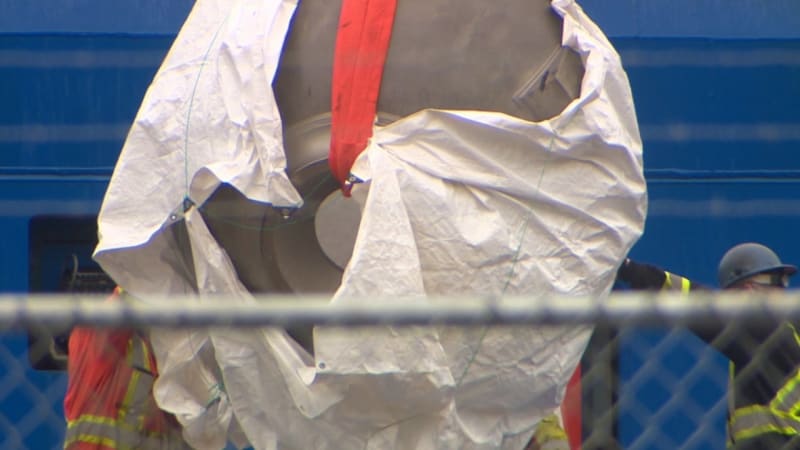Cool_Controls
Electrical
- Feb 5, 2020
- 164
I saw some additional photos on TV, one appeared to be the titanium end ring sans the dome.
Follow along with the video below to see how to install our site as a web app on your home screen.
Note: This feature may not be available in some browsers.

Just Some Nerd said:what's the purpose of going all-in on light-weight composites compared to over-designing the hell out of a submersible with metal? Is it purely a cost-cutting decision, or is it primarily an issue with weight?
My uninformed opinion, the weight savings probably had ripple effects into the profit picture in a number of possible ways:Brian Malone said:I have wondered about that, too. Maybe those in the know can answer. Is carbon fiber construction cheaper than steel? Titanium is probably the most costly due to material cost and fabrication cost. Weight of the sub would not be a total issue since the submersible has to use ballast to sink; therefore, less ballast would be required to descend. So would weight of the sub not be balanced against the buoyancy to set the maximum rate of ascent? Was the CF just a good sales point for making a claim for having the first/only CF hulled submersible?
* 3A - Innovative carbon fiber high tech toys are more attractive to millionaire tourists.
* 3 - It could be used to help support the argument they made that the ship was so innovative that it should be excluded from ship classification procedures, which undoubtedly would have carried heavy costs.
In retrospect, my items 1/2/3 above should not have all been lumped into the same bucket. 1/2 were my attempts to look for true technical cost benefits of carbon fiber, which is what JSN and Brian were musing about. 3 is a different category altogether (more related to managing perceptions than to any technical benefits), and as you point out IRStuff may well have been the biggest factor to the extent it was used to justify to their customers why they didn't pursue classification.electricpete said:My uninformed opinion, the weight savings probably had ripple effects into the profit picture in a number of possible ways:
1 - It means they can build a less-spherical vessel with more seating room for passengers at $250k each and still maintain plenty of reserve buoyancy.
2 - It also allows so much reserve buoyancy that they could segregate their releasable balance weights into several independently-actuated discrete units, any of which would float the submersible (releasing pipes, releasing sandbags, blowing up a balloon with compressed air). While that is a legitimate safety benefit, the presence of such redundancy may have allowed them to help justify skimping on other safety systems/features.
3 - It plays into the whole storyline that the design was very innovative. That has two potential benefits for the profit:
* 3A - Innovative carbon fiber high tech toys are more attractive to ultra-rich tourists.
* 3B - It could be used to help support the argument they made that the ship was so innovative that it should be excluded from ship classification procedures, which undoubtedly would have carried heavy costs
